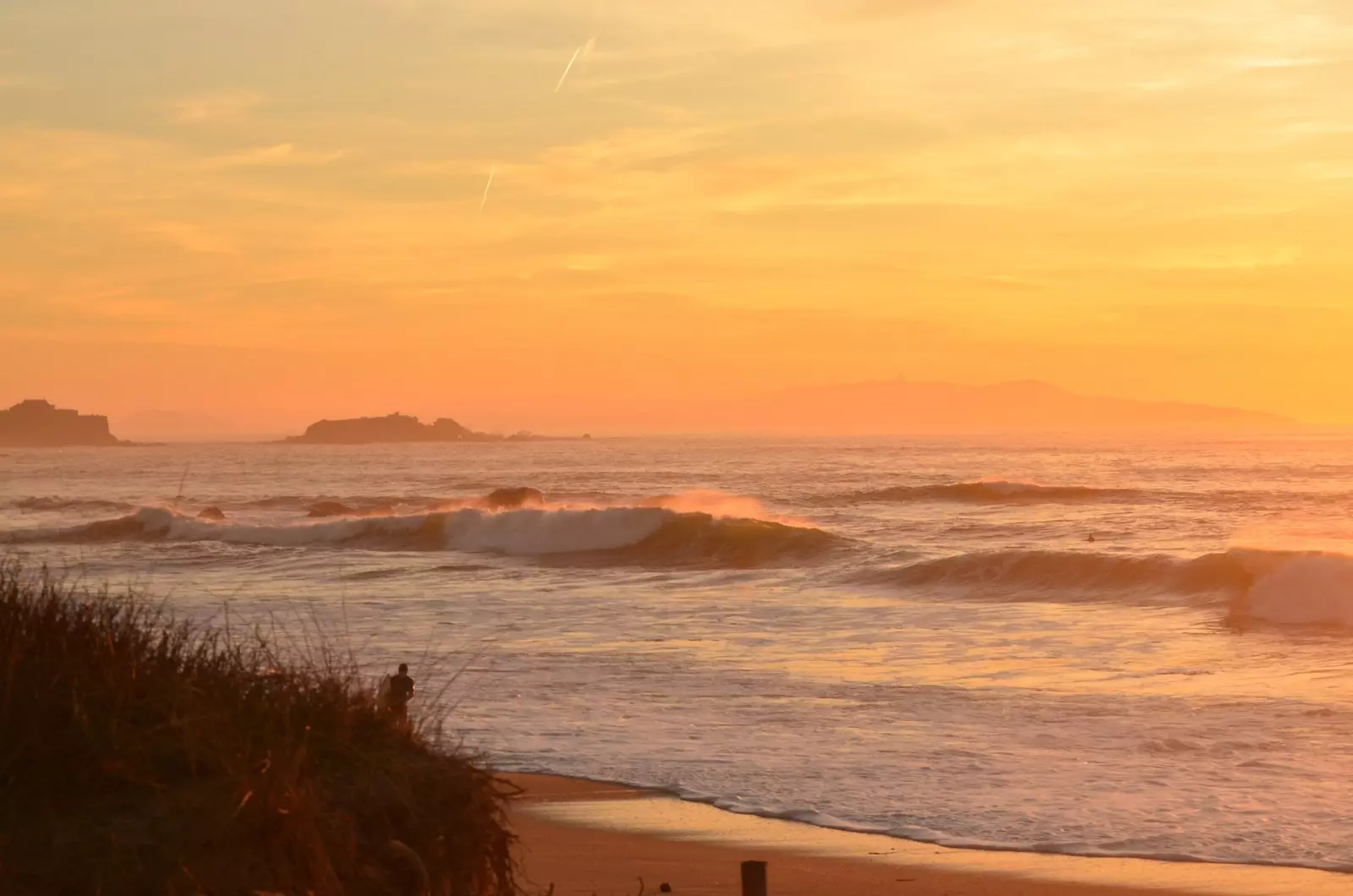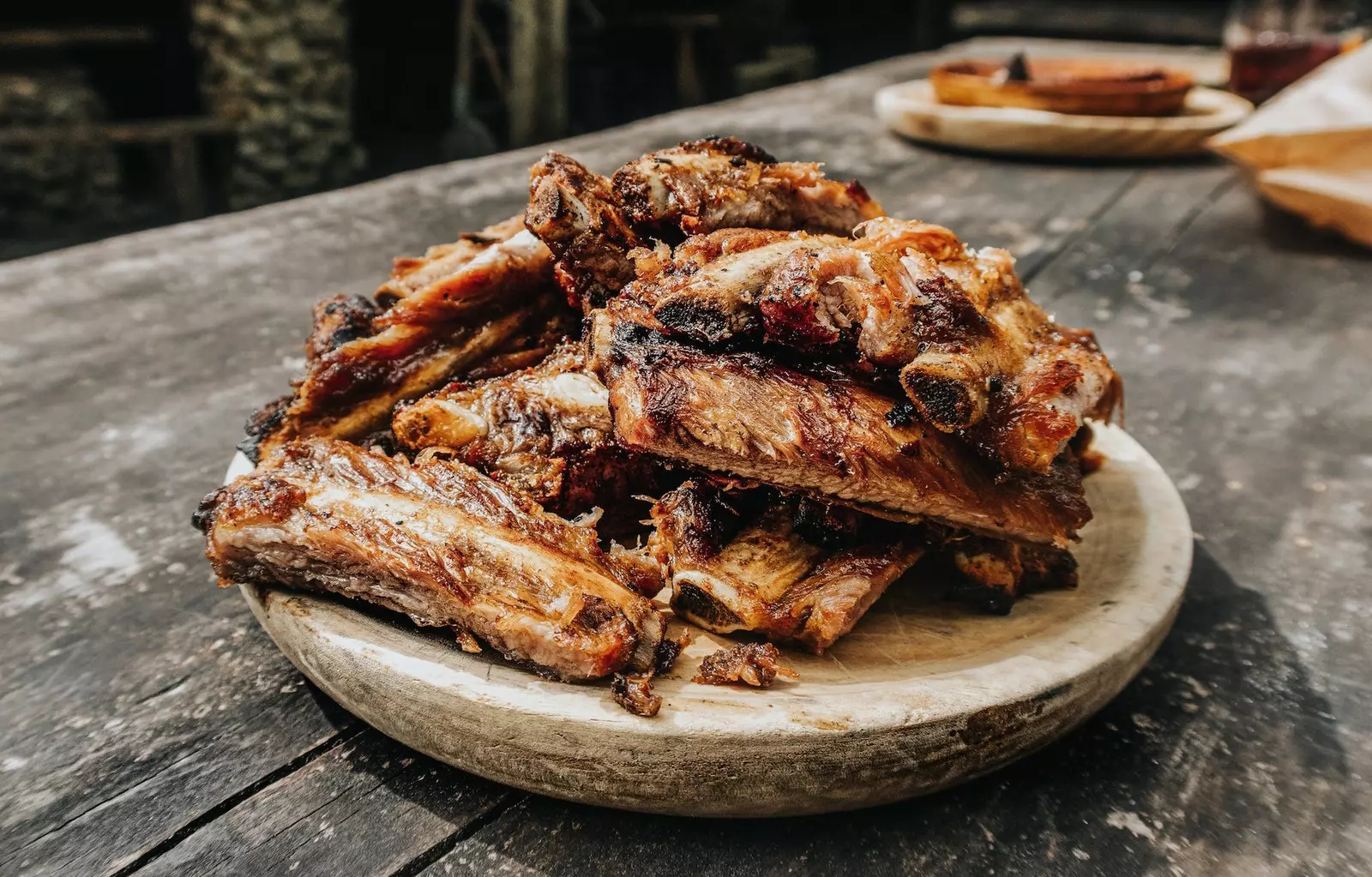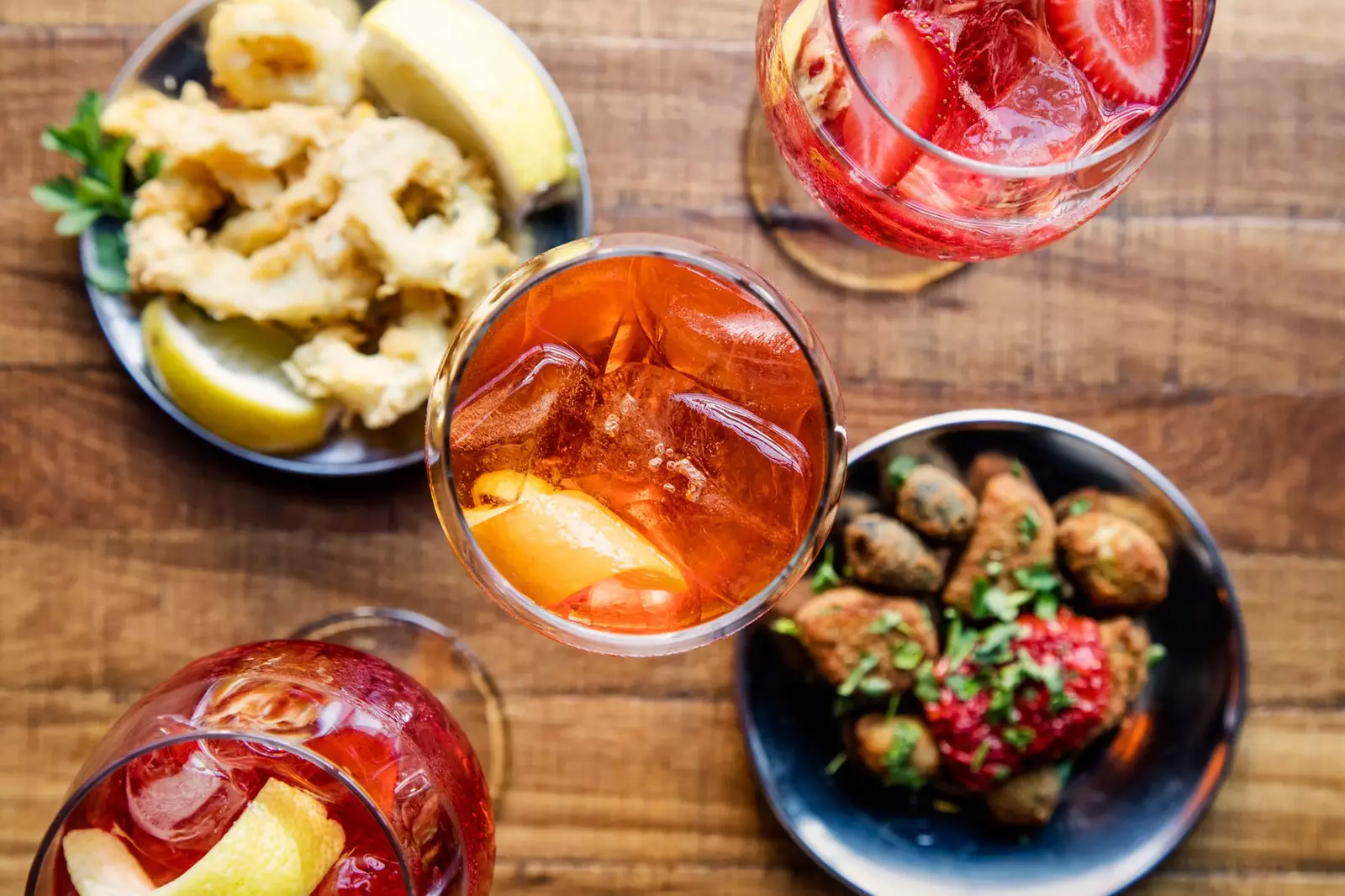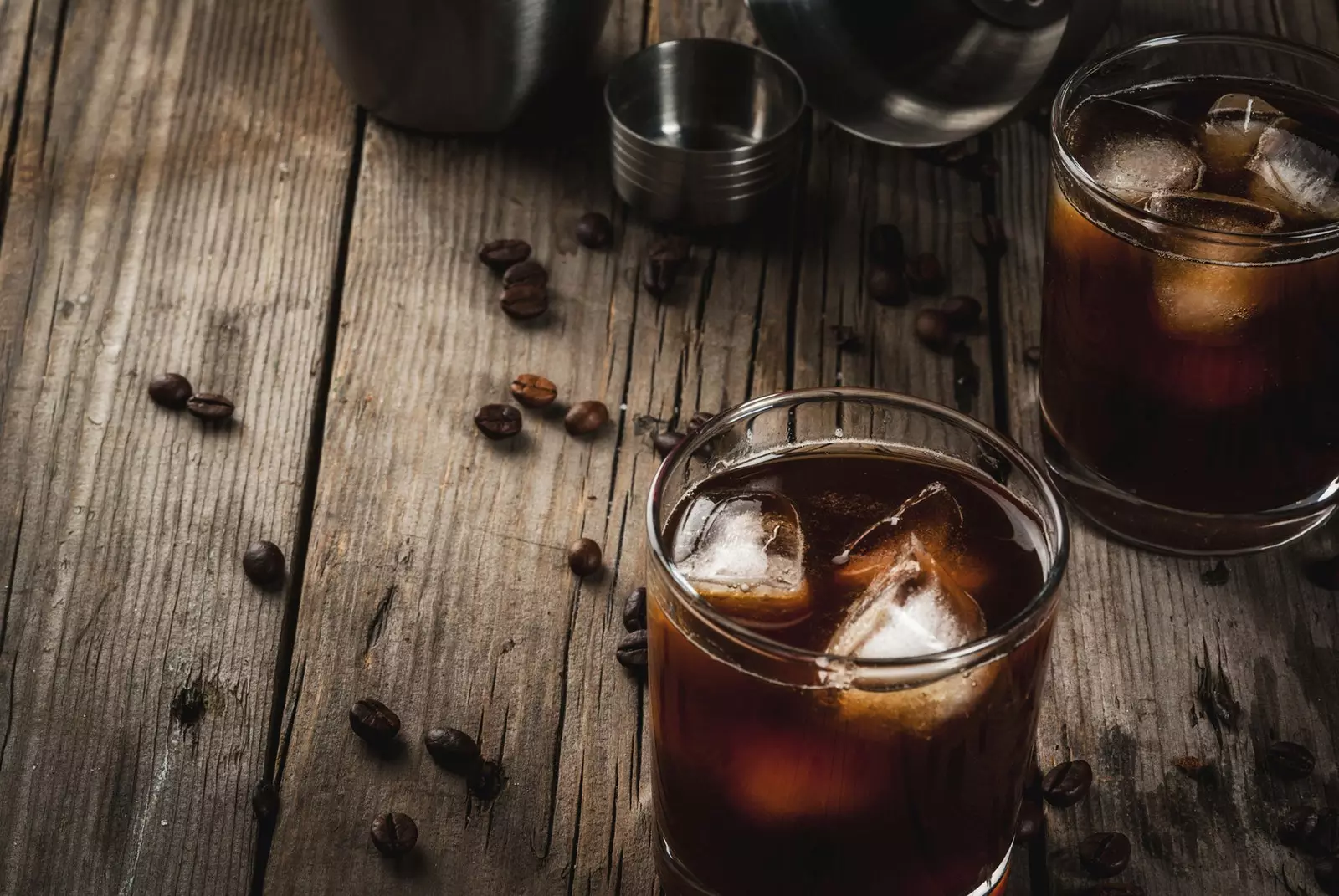
Galicia, spirits and summer
This summer will be different . We will all plan our getaways a little more and look for quieter places to escape the crowds. And in this much of Galicia has a most tempting offer: rural houses in tiny villages, more than 750 beaches (and a few hundred small coves) and trails where it is normal not to meet anyone for hours become an even more appealing alternative than other years.
It is true that the festive calendar will be affected this year and that we will surely not be able to enjoy those endless dance sessions in the town square to the sound of the Panorama orchestra or the Paris of Noia, the portions on the terraces or the fireworks from the beach.

BBQ!
But where there are more than three Galicians and a summer night, the party options will continue to be high. And as long as we keep a place where prepare a barbecue or some grilled sardines and something to drink accompanying them, the celebration is guaranteed, because if we have something over the years it is the ability to find the perfect moment for a toast.
For this tendency to have a drink for every occasion (and several names for each one) don't get caught offside, and don't have to limit yourself to a sad kalimotxo, here is an essential vocabulary to drink in Galicia this summer in which we will continue to celebrate, although we are still not very clear how :
TO PARVA
Formerly it was a custom of the workers, who on an empty stomach could take a glass of brandy perhaps accompanied by a coffee , to tone the body before going to work. A few hours later they would have breakfast proper, or lunch.
Currently it is a custom in clear decline. But still, it stays in the celebrations. If there's going to be one pig slaughter , if you are going out to do the street parade with a bagpipe band or if you are going to spend the whole morning preparing the firewood, grilling and setting up an anthological barbecue, start taking the parva is his thing.
Indeed, the parva is dry anise or cane , which is how you order a brandy around here. Never ask for orujo or even less a cane of orujo or they will be able to stamp foreigner on your forehead at that very moment. And it is the hand of a saint for a hangover. That's what a friend told me.
ANXÉLICA
It is a variant of the parva that was taken in different areas of the province of Ourense, where it was so popular that it could also be taken at other times: two parts must or wine, one part brandy and sugar to taste. If this does not activate the party mode...
BEER
If you thought that knowing how to ask a cane or a short was enough and that knowing the concept zurito it qualified you as an expert in beers from the north, forget it and start from scratch.
In Galicia a caña is the default beer size . And what size is that? Well, it depends. Bigger than a short, that's for sure. Y It will be in the 250 and 300 milliliters , about. If you want less, yours is to ask for a short one, which is approximately the size of what in Andalusia they would serve you as a cane. Confusing enough for you? Well wait, there's more.
here you don't ask a bottle, a double or a tank, although it is understood . ask one fifth (small, 200 ml) or a beer, without further ado. Or, if anything, a star , which is still the default beer. And if they don't have it, they'll tell you.
Now if you're in the area Cangas do Morrazo and they offer you a Turkish They will be offering you, precisely, an Estrella Galicia and, by extension, a beer. You already know about the rivalry between Vigo and Coruña. Well, Estrella Galicia, even though it is from A Coruña, is the most popular beer also in the Vigo estuary, where Cangas is located. And given that over there the people of Coruña are called Turks, well…
If you go a little further north, to the Arousa estuary , and you stop in Boiro you can also order a Gallarda or, pronounced with the local accent, a ghallarda . That GH will probably sound like a J , although it is smoother, characteristic of the phenomenon known as geada , of the way of speaking in the estuary.
And what is a gallardo? Well, a mug of beer. , something bigger than a cane. But even if it is served in a pitcher, do not ask for a pitcher thinking of a gallarda. And if you do, go asking for a taxi, that the thing has all the ballots to lengthen and what is going to arrive at the table will probably touch the liter.
THE VERMOUTH SESSION
A summer party classic . That terrace in the sun, or that bench in the square, while the orchestra prepares the atmosphere for the night is the starting signal for several days of celebration. That this year will be a little quieter, but it will be. There's no doubt.
And if there is an essential part of the vermouth session, the name itself indicates it, is the vermouth . As much as beer has become queen, there was a time when queuing at the bar set up by the festival committee and ordering a vermouth was the thing to do. And his thing was to ask for a mix, half red and half white . What good times in the sun and what memorable naps.
THE TABLE
If you are lucky enough to end up eating at someone's house during the local festivals, do two things: go with appetite and do not make plans for later . Because things tend to drag on and the food, although copious, is only the beginning.

Calamari and rich vermouth
The heart of the matter is the desktop , which starts after eating and it ends sometime between dinner and dawn the next day. And here will come out the brandy, the anise, the coffee liquor and, if you're lucky, the frosty , which is nothing more than anise or rum saturated with sugar that was fashionable decades ago. Such is the amount of sugar that is added to it, that it is usually sold with a straw inside, a dry herb around which the saturated sugar crystallizes.
It's easy to drink, if you like sweet drinks. But if you do, pray what you know beforehand. And don't come tomorrow so we didn't notify you.
FROM RIGA TO RIBADEO
Ribadeo was an important commercial port in the 18th and 19th centuries . To this small town in the Maria Lugo Sailors arrived from all over Europe. And where there are sailors there are drinks.
The path established between Ribadeo, Memel (present-day Klaipeda) and Riga for the trade of wheat, flax and hemp made the town become fashionable Kummel , a Baltic liqueur made from caraway seeds.
Today it is not easy to find, although if you try hard there is always someone who knows someone, but it was so popular that, as you pick up Alvaro Cunqueiro , until a recipe for duck with kummel was developed in the town.

The coffee liqueur is a Galician invention to exterminate the rest of the peninsula
TOASTED
Do not confuse it with Toast . The first is a wine that was on the verge of disappearing and has been recovering in recent years, while the toast is a brandy flavored with burnt caramel.
Roasting was common in Or Ribeiro , where native grapes were allowed to raisin in the sun to concentrate the sugars. The result is a sweet wine but with acid nuances, complex, elegant and perfect for after-dinner. Fortunately, there are already several wineries that have recovered their production.
THE SPIRITS
They come out in every desktop, you will find them for sale at fairs and festivals and there are almost everything, from the classics shared with other areas to green walnuts, coriander, cherry leaves, bay leaves, bitter orange peel, toxos flowers, wild strawberries or caramiñas, those white berries that very occasionally when some bushes that grow on the dunes. Without forgetting the risolios, which have their roots in the Middle Ages.
Each area has its liquors and each family its specialty . There are even monasteries that have perfected their formulas. If you are curious, be sure to try the Eucalyptine of the monks of Oseira or the liquor pax of the Benedictines of Samos.
